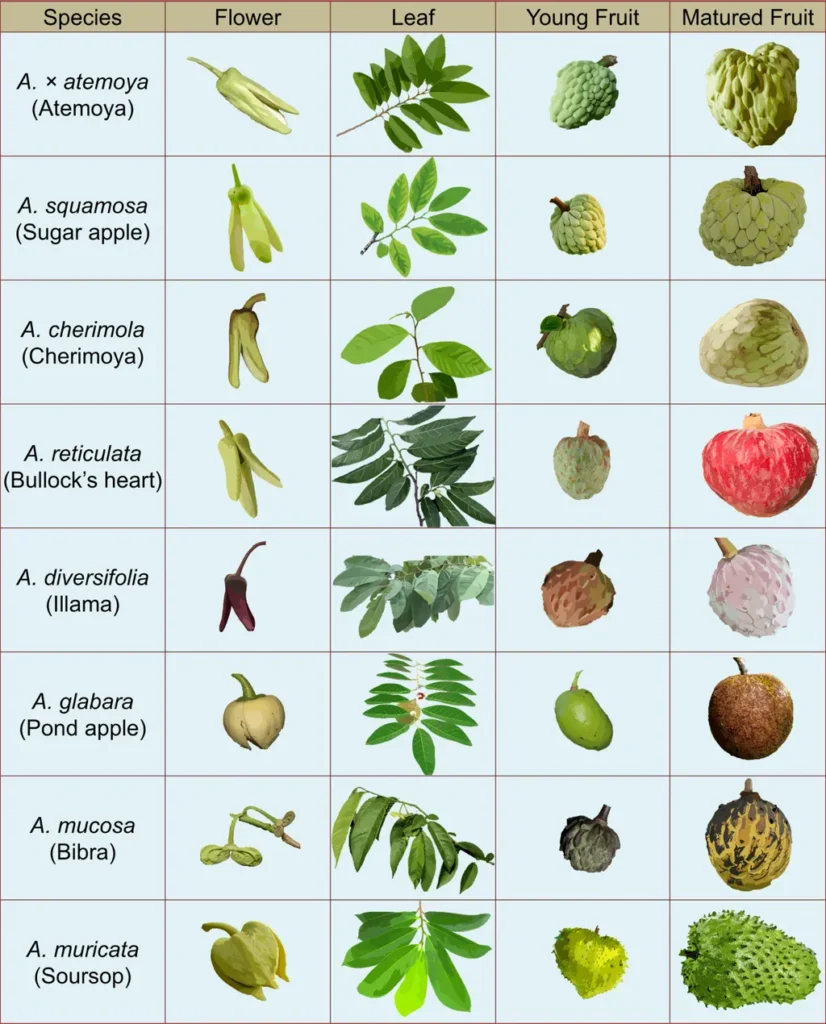In the heart of Gujarat, India, a team of researchers has been diligently unraveling the genetic and morphological secrets of Annona, a family of fruits known for their unique flavors and textures. The study, led by Jagruti S. Mahla from the Department of Genetics and Plant Breeding at Sardarkrushinagar Dantiwada Agricultural University, has significant implications for the agriculture sector, particularly for breeders and commercial growers.
The research, published in the International Journal of Bio-Resource and Stress Management, focused on the phenology and molecular characterization of various Annona genotypes. The team identified distinct morphological traits, such as leaf shapes, leaf apex, leaf base, and fruit shapes, which can help in the visual identification and classification of different Annona species. “The diversity in these traits is crucial for breeders as it provides a pool of characteristics that can be exploited for developing new varieties,” Mahla explained.
The study also delved into the biochemical properties of Annona fruits, revealing a range of total soluble solids (TSS), titratable acidity (TA), sugars, ascorbic acid, and phenol content. These findings are not just academically interesting; they have real-world applications. For instance, understanding the sugar and acid content can help growers and processors tailor their products to meet market preferences, potentially increasing the commercial value of Annona fruits.
But perhaps the most significant contribution of this research is the use of Simple Sequence Repeat (SSR) markers to study the genetic diversity among Annona genotypes. SSR markers are like genetic fingerprints, unique to each genotype. By analyzing these markers, the researchers were able to develop a dendrogram—a genetic family tree—that revealed the genetic relationships among the genotypes. “The SSR markers proved to be efficient in studying the divergence among Annona genotypes,” Mahla noted. This genetic information is invaluable for breeders as it can guide them in selecting parents for crossing programs to develop new, improved varieties.
The study’s findings could shape future developments in the field in several ways. For one, the identified morphological and biochemical traits can serve as selection criteria for breeders. Moreover, the genetic information can facilitate the conservation of Annona genetic resources and guide the development of breeding strategies. As the global demand for diverse, nutritious, and flavorful fruits continues to grow, research like this is not just academic exercise; it’s a stepping stone towards meeting market demands and ensuring food security.
In the ever-evolving world of agriculture, understanding the genetic and morphological diversity of crops is crucial. This research is a testament to that, offering a glimpse into the future of Annona breeding and cultivation. As Mahla and her team continue to unravel the secrets of Annona, one thing is clear: the future of this fruit family is looking bright and delicious.

